One table to understand the heat treatment of steel products:
| Name | Heat treatment process | Purpose of heat treatment | |||
| 1. Annealing | Heat the steel to a certain temperature, keep it for a certain time, and then slowly cool it to room temperature | ①Reduce the hardness of steel and increase plasticity to facilitate cutting and cold deformation processing | |||
| ② Refine the grains, uniform the structure of the steel, improve the performance of the steel and prepare for the subsequent heat treatment | |||||
| ③ Eliminate internal stress in steel. Prevent deformation and cracking of parts after processing | |||||
| Annealing category | Fully annealed | Heat the steel to the critical temperature (the critical temperature of different steels is different, generally 710-750℃, and the critical temperature of individual alloy steels can reach 800-900℃) 30-50℃, keep it for a certain period of time, and then slowly cool with the furnace (or Buried in sand to cool) | Refine grain, uniform organization, reduce hardness, fully eliminate internal stress, complete annealing is suitable for carbon content (mass fraction) in O. Forgings or steel castings below 8% | ||
| Spheroidizing annealing | The steel parts are heated to 20~30ºC above the critical temperature, and after heat preservation, they are slowly cooled to below 500℃ and then air-cooled out of the furnace. | Reduce the hardness of steel, improve cutting performance, and prepare for subsequent quenching to reduce deformation and cracking after quenching. Spheroidizing annealing is suitable for carbon content (mass fraction) greater than O. 8% carbon steel and alloy tool steel | |||
| Stress relief annealing | 将Heat the steel parts to 500~650ºC, keep it for a certain period of time, and then slowly cool down (generally use furnace cooling) | Eliminate internal stress generated during welding and cold straightening of steel parts, eliminate internal stress generated during cutting of precision parts, to prevent deformation during subsequent processing and use | |||
| Stress relief annealing is suitable for all kinds of castings, forgings, welded parts and cold extruded parts, etc. | |||||
| 2. Normalizing | Heat the steel to 40~60ºC above the critical temperature, keep it for a certain period of time, and then cool it in the air | ①Improve the organization structure and cutting performance | |||
| ② Normalizing is often used as the final heat treatment for parts that do not require high mechanical properties | |||||
| ③ Eliminate internal stress | |||||
| 3. Quenching | Heat the steel parts to the quenching temperature, keep them for a period of time, and then rapidly cool them in water, salt water or oil (individual materials in the air) | ①Make steel parts obtain higher hardness and wear resistance | |||
| Quenching category | Single liquid quenching | The steel parts are heated to the quenching temperature, and after heat preservation, they are cooled in a quenching agent | ②Make the steel parts get some special properties after tempering, such as higher strength, elasticity and toughness, etc. | ||
| Single-liquid quenching is only suitable for carbon steel and alloy steel parts with relatively simple shapes and low technical requirements. When quenching, for carbon steel parts with a diameter or thickness greater than 5-8mm, choose salt water or water cooling; alloy steel parts choose oil cooling | |||||
| Double liquid quenching | The steel parts are heated to the quenching temperature, after heat preservation, they are quickly cooled to 300-400ºC in water, and then moved to oil for cooling | ||||
| Flame surface hardening | Use a mixture of acetylene and oxygen to spray the flame on the surface of the part to quickly heat the part to the quenching temperature, and then immediately spray the surface of the part with water. The flame surface quenching is suitable for single-piece or small batch production, and the surface requires hard and wear-resistant. Large medium-carbon steel and medium-carbon alloy steel parts that can withstand impact loads, such as crankshafts, gears and guide rails, etc. | ||||
| Surface induction hardening | Put the steel part in the inductor, the inductor generates a magnetic field under the action of a certain frequency of alternating current, and the steel part generates an induced current under the action of the magnetic field, so that the surface of the steel part is rapidly heated (2-10min) to the quenching temperature, and then immediately Spray water onto the surface of the steel. | ||||
| The surface induction hardened parts have a hard and wear-resistant surface, while the core maintains good strength and toughness. | |||||
| Surface induction hardening is suitable for medium carbon steel and alloy steel parts with medium carbon content | |||||
| 4. Temper | Heat the quenched steel parts below the critical temperature, keep it for a period of time, and then cool it in air or oil | ① Obtain the required mechanical properties. Under normal circumstances, the strength and hardness of the parts after quenching are greatly improved, but the plasticity and toughness are significantly reduced, and the actual working conditions of the parts require good strength and toughness. After selecting the appropriate tempering temperature for tempering, the required mechanical properties can be obtained | |||
| Tempering is carried out immediately after quenching and is also the last process of heat treatment | ②Stable organization, stable size | ||||
| ③ Eliminate internal stress | |||||
| Tempering category | Low temperature tempering | The hardened steel parts are heated to 150-50ºC, and kept at this temperature for a certain period of time, and then cooled in the air. Low temperature tempering is mostly used for cutting tools, measuring tools, molds, rolling bearings and carburized parts, etc. | Eliminate internal stress caused by quenching of steel parts | ||
| Tempering | Heat the quenched steel parts to 350-450%, and cool down after holding for a period of time. Generally used for parts such as various springs and hot stamping dies. | Make steel parts obtain higher elasticity, certain toughness and hardness | |||
| High temperature tempering | The quenched steel parts are heated to 500~650ºC and cooled after heat preservation. They are mainly used for important structural parts requiring high strength and toughness, such as main shafts, crankshafts, cams, gears and connecting rods. | Make steel parts obtain better comprehensive mechanical properties, that is, higher strength, toughness and sufficient hardness, and eliminate internal stress caused by quenching of steel parts | |||
| 5. Tempering | High temperature (500~600ºC) tempering of quenched steel parts is mostly used for important structural parts, such as shafts, gears, connecting rods, etc. The quenching and tempering is generally carried out after rough machining | Refine the crystal grains to obtain higher toughness and sufficient strength for steel parts, so that it has good comprehensive mechanical properties | |||
| Time effect handling | Artificial aging | The quenched steel parts are heated to 100~160℃, after a long time of heat preservation, and then cooled | Eliminate internal stress, reduce part deformation, stabilize size, and it is more important for parts with higher accuracy requirements | ||
| Natural aging | Place castings in the open air; steel parts (such as long shafts, lead screws, etc.) are placed in sea water or suspended for a long time or lightly tapped. Parts that have undergone natural aging are best to be roughed first | ||||
| Chemical heat treatment | Put the steel part in a chemical medium containing some active atoms (such as carbon, nitrogen, chromium, etc.), and make certain atoms in the medium penetrate into the surface of the steel part through heating, heat preservation, cooling and other methods, so as to achieve change The chemical composition of the surface layer of the steel part makes the surface layer of the steel part have a certain special performance | ||||
| Chemical heat treatment category | Carburizing | Infiltrate carbon atoms into the surface of steel parts | Make the surface have high hardness (HRC60~65) and wear resistance, while the center still maintains high toughness | ||
| Commonly used for wear-resistant and impact-affected parts, such as wheels, gears, shafts, piston pins, etc. | |||||
| Nitriding of steel | Infiltrate nitrogen atoms into the surface of steel parts | Improve the hardness and wear resistance of the surface of steel parts, | |||
| Commonly used for important bolts, nuts, pins and other parts | Corrosion resistance | ||||
| Cyanide of steel | Infiltrate carbon and nitrogen atoms into the surface of steel parts at the same time. It is suitable for low carbon steel, medium carbon steel or alloy steel parts, and can also be used for high-speed steel tools. | Improve the hardness and wear resistance of the surface layer of steel parts | |||
| 8. Blackening | The metal parts are heated and oxidized in a strong alkali and oxidant solution, so that a magnetic ferroferric oxide film is formed on the surface of the metal parts. It is commonly used in low-carbon steel and low-carbon alloy tool steel. | Anti-rust, increase the beauty and luster of the metal surface, and eliminate the stress in the quenching process
|
|||
| Due to the influence of materials and other factors, the color of the film of the blackening layer is blue-black, black, red-brown, tan, etc., and its thickness is 0.6~O. 8µm | |||||
Please keep the source and address of this article for reprinting:One table to understand the heat treatment of steel products
Minghe Die Casting Company are dedicated to manufacture and provide quality and high performance casting Parts(metal die casting parts range mainly include Thin-Wall Die Casting,Hot Chamber Die Casting,Cold Chamber Die Casting),Round Service(Die Casting Service,Cnc Machining,Mold Making,Surface Treatment).Any custom Aluminum die casting, magnesium or Zamak/zinc die casting and other castings requirements are welcome to contact us.
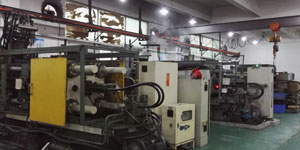
Under the control of ISO9001 and TS 16949,All processes are carried out through hundreds of advanced die casting machines, 5-axis machines, and other facilities, ranging from blasters to Ultra Sonic washing machines.Minghe not only has advanced equipment but also have professional team of experienced engineers,operators and inspectors to make the customer’s design come true.
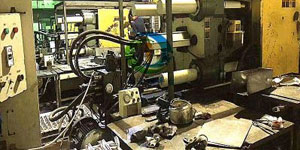
Contract manufacturer of die castings. Capabilities include cold chamber aluminum die casting parts from 0.15 lbs. to 6 lbs., quick change set up, and machining. Value-added services include polishing, vibrating, deburring, shot blasting, painting, plating, coating, assembly, and tooling. Materials worked with include alloys such as 360, 380, 383, and 413.
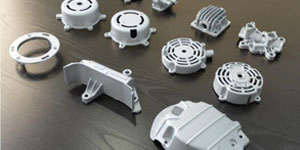
Zinc die casting design assistance/concurrent engineering services. Custom manufacturer of precision zinc die castings. Miniature castings, high pressure die castings, multi-slide Mold castings, conventional mold castings, unit die and independent die castings and cavity sealed castings can be manufactured. Castings can be manufactured in lengths and widths up to 24 in. in +/-0.0005 in. tolerance.
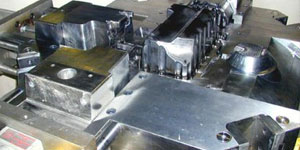
ISO 9001: 2015 certified manufacturer of die cast magnesium, Capabilities include high-pressure magnesium die casting up to 200 ton hot chamber & 3000 ton cold chamber, tooling design, polishing, molding, machining, powder & liquid painting, full QA with CMM capabilities, assembly, packaging & delivery.
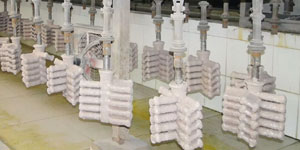
ITAF16949 certified. Additional Casting Service Include investment casting,sand casting,Gravity Casting, Lost Foam Casting,Centrifugal Casting,Vacuum Casting,Permanent Mold Casting,.Capabilities include EDI, engineering assistance, solid modeling and secondary processing.
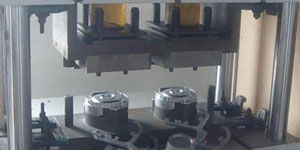
Casting Industries Parts Case Studies for: Cars, Bikes, Aircraft, Musical instruments, Watercraft, Optical devices, Sensors, Models, Electronic devices, Enclosures, Clocks, Machinery, Engines, Furniture, Jewelry, Jigs, Telecom, Lighting, Medical devices, Photographic devices, Robots, Sculptures, Sound equipment, Sporting equipment, Tooling, Toys and more.
What Can we help you do next?
∇ Go To Homepage For Die Casting China
→Casting Parts-Find out what we have done.
→Ralated Tips About Die Casting Services
By Minghe Die Casting Manufacturer |Categories: Helpful Articles |Material Tags: Aluminum Casting, Zinc Casting, Magnesium Casting, Titanium Casting, Stainless Steel Casting, Brass Casting,Bronze Casting,Casting Video,Company History,Aluminum Die Casting |Comments Off
Link to this article:One table to understand the heat treatment of steel products
Reprint Statement: If there are no special instructions, all articles on this site are original. Please indicate the source for reprinting.:Casting Wiki,THANKS!^^
